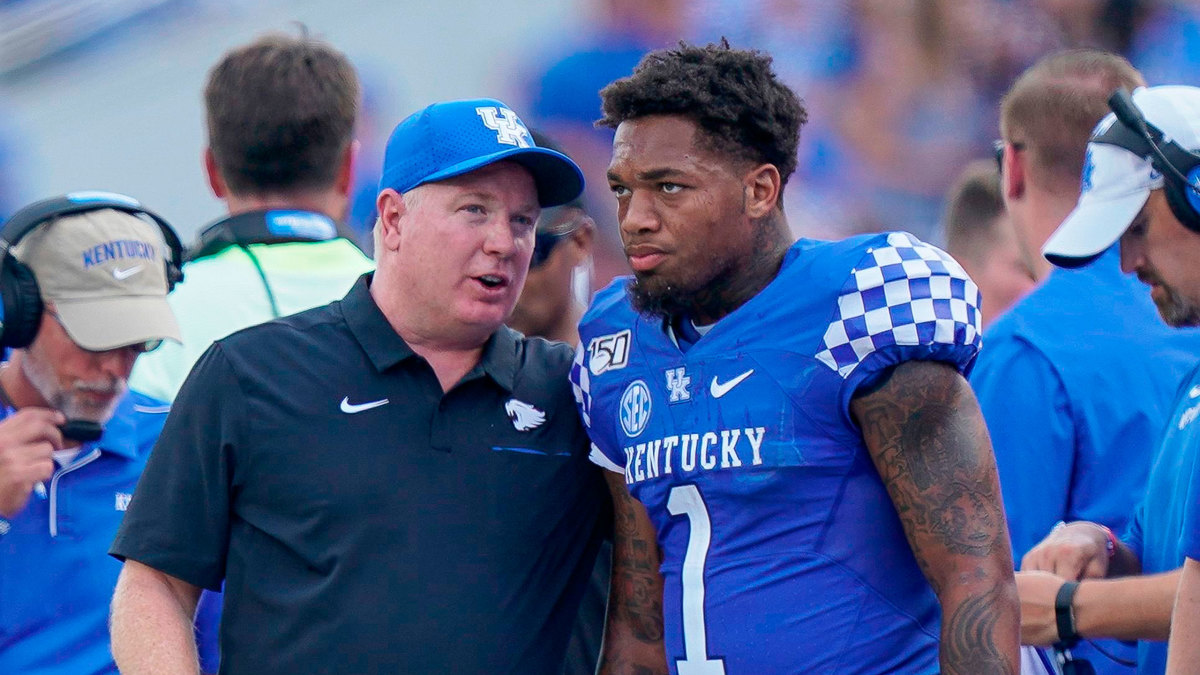How a Change in Recruiting Territory Has Kentucky Football on the Upswing


This year the No. 1 overall recruit in Michigan is going to…Kentucky?
When the early signing period began Wednesday and players around the country started signing their national letters of intent, Justin Rogers, a 6’2”, 311-pound defensive end and consensus five-star prospect from Oak Park, Mich., officially became a Wildcat.
Offensive tackle Deondre Buford (Detroit, Mich.) and wide receiver Earnest Sanders (Mount Morris, Mich.) joined him, becoming the only top-50 players in the state to commit to an SEC program. In Ohio, there are five top-20 prospects planning to sign with an SEC team, four of which are committed to the Wildcats—and there may be a fifth should all-purpose back Michael Drennen II (Dublin, Ohio) choose Kentucky over Ohio State.
“[Kentucky] puts an emphasis on recruiting this area,” says Greg Carter, who coached Rogers at Oak Park High School. “Most SEC schools don’t really come this far [north]. Maybe once every 5-10 years they pick up a player from here. But since Kentucky is so close to Ohio and Michigan, they recruit our guys. It’s not really long distance.”
Kentucky’s recent rise and respectability, including a 10-win season in 2018, is a direct result of head coach Mark Stoops deviating from the obvious recruiting trail in the Southeast and hammering the Midwest. Rogers is the latest example, choosing the Wildcats over offers from more elite programs like Alabama and Michigan. Kentucky’s all-everything player Lynn Bowden, who this season has played receiver, kick returner and quarterback, is from Youngstown, Ohio. Running back Benny Snell, last year’s hero and current Pittsburgh Steeler, is from Columbus, Ohio.
“I’d bet more than half our roster, at least 60%, is from the Midwest,” says Kentucky recruiting coordinator Vince Marrow, who relishes his strong Rust Belt ties and is a key reason why there are at least nine Midwest kids in the 2020 recruiting class. Marrow grew up in Youngstown and played high school football and basketball with Stoops. His career has included coaching stops at Holland High School in Springfield, Ohio and Nebraska, where he worked for another childhood friend, Bo Pelini. In 2013, he joined Stoops at Kentucky.
“It’s totally different now,” Marrow says. “Our brand is very strong in the Midwest. I was [coaching] at Nebraska before I came here and I just said, ‘There are lots of good players in Ohio and Michigan who are going to Michigan State, Notre Dame, Wisconsin and those guys are winning 8-10 games a year.’ So, I said let’s target that and that’s what we did.”
Previous Kentucky coaching staffs didn’t take advantage of the fact that Kentucky borders Ohio, one of the most fertile football recruiting grounds in the country. Marrow thought it was possible that high school coaches in that part of the country may have looked at UK coaches funny if they went up there for a recruiting visit. For Stoops and his staff, however, it was natural to establish a pipeline. If the blue-chippers in SEC Country are more inclined to pick Alabama, Auburn and even Ole Miss or Mississippi State over Kentucky, his staff would veer elsewhere.
It’s smart strategizing. Let conference opponents battle for kids in the South while Kentucky offers players in a different recruiting territory the opportunity to play in the SEC—but at a place that’s still driving distance from their families. Rogers' hometown of Oak Park (a suburb of Detroit), is about 350 miles from UK’s campus.
For Marrow, who has maintained strong Midwestern relationships and established a familiarity in the region, the pitch is simple: “It’s always been, ‘Hey, come play in the SEC,’” he says. “’The best conference.’”
It helps when there’s some familiarity, too. Rogers’ former high school teammate and close friend Marquan McCall is a sophomore defensive lineman at Kentucky. Rogers watched him get recruited and then visited a few times before ultimately making the same decision.
“Once you get a kid who goes to that school, they help recruit the kids back home,” Carter says. “[Oak Park] is a top program around here, but not elite so our kids are the kind who aren’t afraid to help you build something.”
